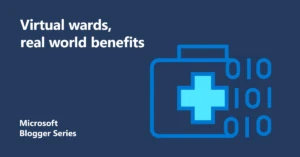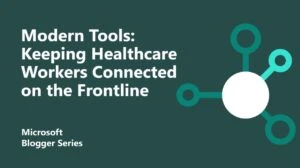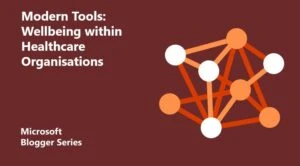
Tag: NHS
Explore:


Part 2: The role of technology in helping communities to level up
Previously, we explored how data sharing will help ICSs to level up their care. We looked at how improving collaboration and proliferating best practice will ensure all individuals – regardless of their circumstances – can access the highest quality services.
Virtual wards, real world benefits
Sometimes it takes a crisis to fully grasp an opportunity. Virtual wards were invented in the early 2000’s by Dr Geraint Lewis, now Director of Population Health at Microsoft. Despite that, it’s only in the last few years that they have taken the NHS by storm.
Using technology to manage the healthcare backlog
Former NHS chief executive Simon Stevens once said that the only renewable source of energy in healthcare is patients. I think this is true. There are always going to be more patients. But as recent times have shown, there’s hardly ever going to be enough of everything else.
How no/low code apps power patient engagement and operational efficiency
If a person has a stroke, the ambulance crew that sees them will typically have just a few minutes to take their history, examine them and take their vital signs before deciding what to do next. Timely and accurate patient data is not just useful in these cases – it’s a key decisive factor.
How to keep frontline healthcare workers connected with digital technology
Previously in our healthcare series, we discussed how Microsoft Teams and Viva can boost team morale and improve frontline employee wellbeing. In this blog, we’re continuing the discussion, this time focussing on how connections are essential for building multi-disciplinary healthcare teams.
How to improve frontline employee wellbeing in healthcare
Healthcare worker productivity and wellbeing management is one of the biggest challenges the healthcare industry faces. Read on and follow our healthcare blogging series to learn how Microsoft Teams and Viva can boost team morale, improve connections within multi-disciplinary teams and attract and retain highly skilled healthcare workers.
4 ways virtual desktops benefit your NHS trust
We’re going to be sharing a story every week for the 12 weeks of summer, showing you how healthcare organisations are using technology to transform patient outcomes and increase productivity. For the tenth blog in the series, Andy Launchbury explores why Windows Virtual Desktop is ideal for improving patient care.
How a modern data platform can transform healthcare
We’re going to be sharing a story every week for the 12 weeks of summer, showing you how healthcare organisations are using technology to transform patient outcomes and increase productivity. For the ninth blog in the series, Matt Fox explores the latest innovations in the modern data platform and how it empowers healthcare professionals.
3 steps to evolving healthcare in the cloud
We’re going to be sharing a story every week for the 12 weeks of summer, showing you how healthcare organisations are using technology to transform patient outcomes and increase productivity.
Microsoft Teams: a smart way to deliver cost-savings, save clinical time, and improve patient care
NHS trusts met for the first Microsoft Teams for Healthcare ‘hack’ to discuss how the platform helps save costs and time, and improve patient care.
